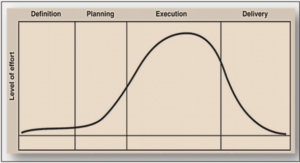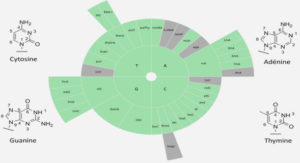Exercise training protocol
Exercise training protocol was performed on a motor driven treadmill for 4 weeks, 5 days/week at a relative work rate corresponding to 50 % of maximal aerobic velocity (20 m/min; 40 min/day). During the 4 following weeks, corresponding to CO exposure period, to preserve exercise training benefits, exercise training was maintained in CO-Ex rats on a frequency of 2 days/week.
Carbon monoxide exposure
Etude n°3 – 153 – CO groups were exposed to simulated CO urban pollution for 4 weeks, 12 hours/day during the night phase. CO rats were housed in an airtight exposure container and exposure was performed as follows: i) During CO exposure, a CO concentration of 30 ppm was maintained in the airtight container and monitored with an aspirative CO analyzer (CHEMGARD Infrared Gas Monitor NEMA 4 Version, MSA), this initial concentration was completed with five 1 hour peaks at 100 ppm CO; ii) During ambient air exposure, animals were placed in the laboratory animal-house at a CO concentration of 0 ppm. Throughout this CO exposure period, Ctrl-Sed rats were confined in the laboratory animal-house and were manipulated daily. At the end of the 4 weeks of CO exposure, the rats were housed for 24 hours in standard filtered air before euthanasia in order to avoid acute effects of CO on the myocardium. 2.4. Ca2+ handling in cardiomyocytes In the first set of rats (n=4/group), evaluation of exercise training and CO exposure on excitation-contraction was performed on single ventricular cardiomyocytes isolated by enzymatic digestion (19). Unloaded cell shortening and Ca2+ concentration (Indo-1 dye) were measured using field stimulation (0.5 Hz, 22°C, 1.8 mM external Ca2+). Sarcomere length (SL) and fluorescence (405 and 480 nm) were simultaneously recorded (IonOptix system, Hilton, USA) (1). 2.5. Regional myocardial ischemia-reperfusion protocol on isolated perfused heart In a second set of rats (n=10/group), a regional myocardial IR protocol on isolated-perfused heart was performed (16). The coronary occlusion-induced Etude n°3 – 154 – myocardial regional ischemia was maintained for 30 min. Subsequently, the heart was allowed to reperfuse during 120 min. Lactate dehydrogenase (LDH) release, incidence of ventricular fibrillation and infarct size were evaluated. 2.6. Biochemical assays 2.6.1. Heart antioxidant enzyme activity In order to assess the effects of exercise training and/or CO exposure on the antioxidant capacity, heart enzymatic antioxidant status was measured in the third set of rats as previously described (n=5/group), (16). Superoxide dismutase (SOD), catalase (CAT) and glutathione peroxidase (GPx) enzymatic activities were evaluated. 2.6.2. Lactate dehydrogenase activity in coronary effluents LDH activity, used as an index of cell membrane damage, was measured in coronary effluents at 5 min of reperfusion. LDH activity was measured spectrophotometrically using a LDH kit (LDH-P, BIOLABO SA, France).
Western blot analysis
Proteins were separated using 4-20 % SDS-PAGE and blotted onto a nitrocellulose membrane (Protran, Schleichen and Schuele, Dassel, Germany). Membranes were incubated overnight at 4°C with the SERCA-2a antibody (A010-20, Badrilla, UK), and levels were expressed relative to glyceraldehydes 3-phosphate dehydrogenase (GAPDH) content on the same membrane. Immunodetection was Etude n°3 – 155 – carried out using the ECL Plus system (Amersham Pharmacia, Little Chalfont Buckinghamshire, England). 2.7. Statistics Data were analyzed using either one-way factorial or repeated measures ANOVA. When significant interactions were found, a Student-Newman-Keuls test was applied. Binomially distributed variables (such as incidence of ventricular fibrillations) were analyzed using a non parametric Yates’ chi square test (Statview; Adept scientific, Letchworth, UK). A level of p<0.05 was considered statistically significant. Data are expressed as group means or group mean fractions of baseline ± S.E.
Contraction and Ca 2+ handling in single cells
Chronic exposure to CO pollution decreased SL shortening (Fig. 1 AB), increased diastolic cytosolic Ca2+ (Fig. 1 CD), and decreased the amplitude of the Ca2+ transient (Fig. 1 CE). In addition, the decay kinetics (tau) of the Ca2+ transient were impaired (Fig. 1 F), which was explained by a decrease in SERCA-2a expression in CO rats (Fig. 1 G). Exercise training prevented both SERCA-2a reduction (Fig. 1 G) and Ca2+ handling alterations (Fig. 1 DEF). Exercise training therefore preserved normal SL shortening, which was similar to that of rats living in standard filtered air (Fig. 1 AB).
Myocardial enzymatic antioxidant status
After 4 weeks of sustained CO exposure, myocardial enzymatic antioxidant status was depressed. The SOD and GPx activities were reduced in CO-Sed rats compared to Ctrl-Sed rats (Fig. 2 AB). Exercise training prevented these deleterious effects as SOD and GPx activities did not differ between CO-Ex rats and Ctrl-Sed rats. In contrast, no effect from CO exposure or exercise training was reported on CAT activity (Fig. 2 C).
Infarct size and myocardial cells death
Etude n°3 – 157 – Cardiac cells death induced by IR was aggravated by prolonged CO exposure (Fig. 3 AB). Indeed, infarct size was higher in CO rats than in controls. In addition, LDH release, measured in coronary effluents at the time of post-ischemic myocardial reperfusion and used as an index of cell membrane damage, was higher in CO exposed rats than in their counterparts. The promoting effect of CO exposure on myocardial necrosis was fully prevented by regular exercise as no difference in infarct size was observed between CO-Ex and Ctrl-Sed rats (Fig. 3 AB). Consistently, the same result was obtained regarding the effects of exercise on LDH release during post-ischemic reperfusion (Fig. 3 C).
Myocardial reperfusion arrhythmias
Although no difference was observed in the incidence of VF (33 %, Ctrl-Sed vs. 50 % CO-Sed), chronic CO exposure was responsible for a marked increase in the severity of post-ischemic reperfusion VF. Indeed, sustained VF (Fig. 3 D) occurred in 25 % of CO-Sed rats, whereas this phenomenon was not observed in Ctrl-Sed rats (Fig. 3 E). Interestingly the pronounced deleterious effect of CO exposure on the severity of reperfusion arrhythmias was fully prevented by exercise training since no VF was reported in CO-Ex rats (Fig. 3 E)





